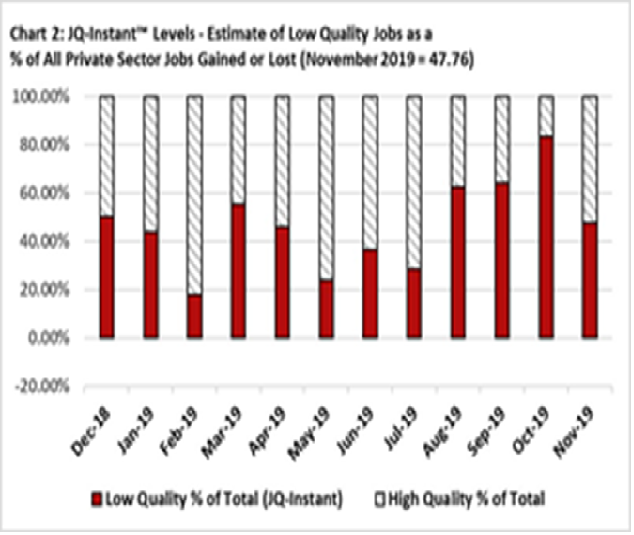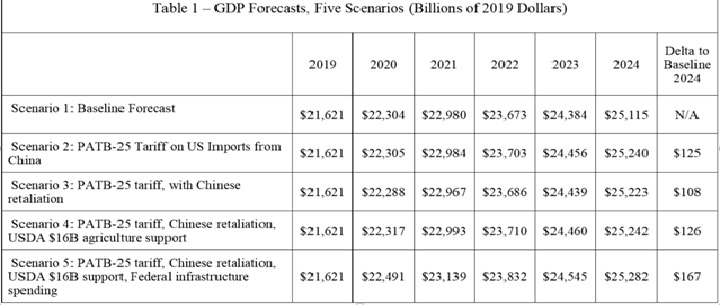My additional heroes are people with whom I connected after my first book, Can American Manufacturing be Saved? Why we should and how we can was published in 2009. We shared a focus on doing what we could to save and rebuild American manufacturing. Again, they are presented alphabetically, not chronologically.
Greg Autry, Ph.D., is “an educator, writer and technology entrepreneur. He researches and publishes on space commerce, entrepreneurship, technology innovation and trade policy. He is an Assistant Professor of Clinical Entrepreneurship with the Lloyd Greif Center for Entrepreneurial Studies in the Marshall School of Business at the University of Southern California, where he teaches entrepreneurship and technology commercialization courses.” I met Greg when he was a doctoral candidate at the Merage School of Business at UC Irvine, before he became Senior Economist for the non-partisan, non-profit organization. Coalition for a Prosperous America, We were also fellow board members of the non-profit American Jobs Alliance for five years. Dr. Autry is the co-author of the book Death by China and a producer on the documentary film, Death by China, (directed by Peter Navarro). His opinion articles have been published in major news outlets including the San Francisco Chronicle, LA Times, Washington Times, Wall Street Journal, and SpaceNews. He was a regular contributor to Huffington Post and is now a regular contributor to Forbes. He is currently on the advisory board of the Coalition for a Prosperous America.
Den Black is President of the non-partisan, non-profit organization, American Jobs Alliance (AJA). He earned a BSME at Kettering University and worked as a Senior Strategist, Futurist, Innovator at Delphi Automotive Systems for 37 years. Den invited me to join the board of AJA in 2012 after he was referred to me by Executive Director, Curtis Ellis after we met when he was on a West Coast trip. AJA is “dedicated to fostering the public’s understanding of the American System of free enterprise, a system established by the Founding Fathers of the United States to develop the domestic economy of the United States and promote the employment of Americans in diverse occupations through investment in infrastructure and promotion of key industries and technologies in the United States.” Currently AJA is promoting a window decal “Boycott China for Jobs, Human Rights, Peace” and AJA’s affiliated website: www.GetOutofChina.us.
Don Buckner is the Founder and CEO of MadeinAmerica.com, MadeinUSA.com, and MadeinAmerica.org. His vision started in 1998 “when he attempted to find several American-made products online, but was unable to do so. Frustrated, he took matters into his own hands, purchasing the Domain MadeintheUSA.com. The website served as a directory resource connecting patriotic consumers to more than 300,000 American-made manufacturers for several years. He also acquired the Domain MadeInAmerica.com.” After the company he founded in 1997, Vac-Tron Equipment, was acquired in 2018, he and his wife decided to invest some of their profits to hold the first Made in America trade show. They rented the convention center in Indianapolis, IN, where the first show was held October 3-6, 2019. I met Don when I attended the show as one of the many featured panelists and speakers. The next Made in America show will be held at the TCF convention center, Detroit, Michigan Oct. 1-4, 2020.
Dan DiMicco, is an American businessman who is the former CEO and chairman of Nucor Steel company and is now Chairman Emeritus. Dan was appointed to the United States Manufacturing Council in 2008 by then-U.S. Commerce Secretary Carlos M. Gutierrez, and served on the board until 2011. Dan also served on the boards of the National Association of Manufacturers and the World Steel Association on the Executive Committee. He also served as a Senior Trade/Economic Advisor to the Trump Campaign and the Lead on the USTR Transition Team. He currently serves on the Board of Directors for Duke Energy Corporation and continues to represent Nucor on the US Council on Competitiveness. He is currently Chairman of the Coalition for a Prosperous America (CPA). He is the author of American Made: Why Making Things Will Return Us to Greatness, published in 2015. I had the pleasure of hearing Mr. DiMicco speak as the keynote speaker at several of the Manufacturing Summits held in California between 2013-2018, when I was the chair of the California chapter of CPA and at the Trade Conferences held by CPA in Washington, D. C. during this same time period.
Curtis Ellis was the Executive Director of the American Jobs Alliance, an independent non-profit organization promoting pro-jobs and Buy American policies, when I met him after my first book was published. He recommended me as a potential board member to Den Black of AJA. He had previously worked in Congress and on federal, state and local campaigns. For his work as a journalist, producer, writer and reporter, he has appeared on 60 Minutes, HBO, NBC, CNN, NPR and in the NY Times, San Francisco Chronicle, Chicago Tribune, TIME, Huffington Post, The Hill, and other outlets. His commentary has appeared on CNN, MSNBC and radio shows nationwide. Currently, Mr. Ellis is currently Policy Director with America First Policies. He served as senior policy advisor on the 2016 Trump-Pence campaign, was on the Presidential Transition Team, and served as special advisor to the U.S. Secretary of Labor in the International Labor Affairs Bureau in 2017.
Ian Fletcher, author of Free Trade Doesn’t Work, What Should Replace it and Why, published in 2011. When I met him, he was a Research Fellow at the U.S. Business and Industry Council. Alan Tonelson asked him to meet me when he was in southern California in the summer of 2010, not long after I started writing blog articles. When, he switched to becoming the Senior Economist of the Coalition for a Prosperous America in early 2011, he suggested I join CPA, which I did. I immediately read his book from which I learned everything I didn’t know about the dangerous effects of our trade agreements. While he was at CPA, he and Michael Stumo (CPA CEO) edited the second edition of my book, Can American Manufacturing be Saved? – Why we should and how we can, which was published in 2012 by CPA. Ian was a featured speaker at several of the above- mentioned Manufacturing Summits. He was educated at Columbia and the University of Chicago, and he lives in San Francisco. He is currently on the advisory board of the Coalition for a Prosperous America.
Rosemary Gibson is a “national authority on health care reform, Medicare, patient safety and overtreatment in medicine, as well as “an award-winning author, inspirational speaker, and advisor to organizations that advance the public’s interest in health care.” She is the co-author of China RX, published in 2018, as well as Medicare Meltdown (2013), Battle Over Health Care (2012), Treatment Trap (2010), and Wall of Silence (2003). I met Ms. Gibson when she was a featured speaker at the Made in America trade show in October 2019. With the outbreak of the COVID-19 pandemic this year, her book is getting the full attention it deserves as an expose of the offshoring to China of pharmaceuticals, PPE, and medical devices.
Harry Moser founded the Reshoring Initiative in 2010 after 25 years as the North American president of GF AgieCharmilles, now GF Machining Solutions. The mission of the Reshoring Initiative is to help bring manufacturing jobs back to the U.S. using the Total Cost of Ownership Worksheet calculator he developed. Harry was inducted into the Industry Week Manufacturing Hall of Fame 2010 and was named Quality Magazine’s Quality Professional of the year for 2012…won the Jan. 2013 The Economist debate on outsourcing and offshoring, and received the Manufacturing Leadership Council’s Industry Advocacy Award in 2014. Harry and I connected in August 2010 after he read my blog article about the importance of understanding Total Cost of Ownership. He told me I wrote about what he just started and trained me how to use his TCO worksheet, authorizing me to be a speaker on behalf of the Reshoring Initiative.
James Sturber is the author of What if Things Were Made in America Again: How Consumers Can Rebuild the Middle Class by Buying Things Made in American Communities, published in 2017. Subsequently, he founded the Made in America again organization. After obtaining a law degree, he “devoted his career to public policy, law and entrepreneurship. He began his career as legislative assistant to a member of the U.S. House of Representatives, focusing on matters before the Committee on Energy and Commerce. He subsequently practiced legislative and administrative law in Washington, D.C. I met Jim at the Coalition for a Prosperous America trade conference in Washington, D. C. in 2018. When I read his book, I discovered we had some up with much of the same data in our research as my last book, Rebuild Manufacturing – the key to American Prosperity was also published in 2017. He currently co-chairs the Buy American committee for CPA of which I am a member.
Alan Uke is a San Diego businessman, entrepreneur, and community leader, who “started his company, Underwater Kinetics, 41 years ago while attending the University of California at San Diego. Uke holds over 40 patents and exports his SCUBA diving, industrial lighting, and protective case products to over 60 countries.” He is the author of Buying America Back, A Real-Deal Blueprint for Restoring American Prosperity, published in 2012. Uke documented that in 2011, the U.S. had a trade deficit with 88 countries provides a chart showing the trade balance with every country with which the U. S. trades. When we met for lunch, I found out that he was also a member of the Coalition for a Prosperous America, so we had something else in common. “He is also Founder Emeritus/Founding Board President of the San Diego Aircraft Carrier Museum which acquired the USS Midway in June 2004.”
I would be remiss in not giving Honorable Mention to the many members of the U.S.-China Economic and Security Review Commission that was “created on October 30, 2000 by the Floyd D. Spence National Defense Authorization Act of 2001…” The primary purpose of this Commission is “to monitor, investigate, and report to Congress on the national security implications of the bilateral trade and economic relationship between the United States and the People’s Republic of China.” Beginning in December 2002, the Commission submitted “to Congress a report, in both unclassified and classified form, regarding the national security implications and impact of the bilateral trade and economic relationship between the United States and the People’s Republic of China. The report shall include a full analysis, along with conclusions and recommendations for legislative and administrative actions, if any, of the national security implications for the United States of the trade and current balances with the People’s Republic of China in goods and services, financial transactions, and technology transfers.” I read several of the reports as I was researching my three books, and each year, China’s unfair trading practices threats to U.S. national security, and other violations of the principles and terms of China’s membership in the World Trade Organization were well documented. Yet, no action was taken by Congress under the administrations of President Bush or President Obama.
I met many other people at the Made in America trade show last October, some of whom have recently joined the CPA Buy American committee. Some of these people could very well be listed in a future article on my heroes as I get to know them and their work better. I would encourage you to join our efforts to rebuild America’s economy to create jobs and prosperity by becoming a member of CPA.

